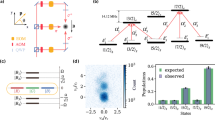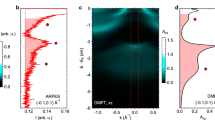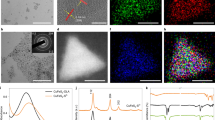Abstract
ABOUT six o'clock on Sunday evening the ruddy appearance of the upper clouds gave warning of an aurora in prospect, but I was not prepared for the magnificent sight which appeared on looking out an hour later. The higher part of the sky seemed covered with bright rose-coloured clouds, which, from the dark masses of clouds passing underneath, seemed continually to be shifting in position. Intervals of deep green appeared amongst the red, and these, when looked at with a spectroscope, gave a stronger light than their surroundings. Objects near were illuminated as if the moon had risen behind the clouds. I had a miniature spectroscope of Browning's, with which I examined the brightest parts, and obtained four lines—one very bright green, two very faint nebulous green bands, and one red line. Having a spirit lamp handy, in which were remnants of sodium, lithium, and sulphate of copper, I was able roughly to estimate the positions of the lines. The red was about a third from D towards the lithium line; the very bright green about a third from D to the copper line near b, the other faint green bands were more refrangible, and I should think their places were between b and F, and near F, but I could not get their positions so well as the other two; certainly the most refrangible was not so far as the violet-potassium line which I could see in the field.
This is a preview of subscription content, access via your institution
Access options
Subscribe to this journal
Receive 51 print issues and online access
$199.00 per year
only $3.90 per issue
Buy this article
- Purchase on SpringerLink
- Instant access to full article PDF
Prices may be subject to local taxes which are calculated during checkout
Similar content being viewed by others
Author information
Authors and Affiliations
Rights and permissions
About this article
Cite this article
MACLEAR, J. The Aurora Borealis of Feb. 4th. Nature 5, 283 (1872). https://doi.org/10.1038/005283c0
Issue date:
DOI: https://doi.org/10.1038/005283c0



